The DJI M300 has set the standard for enterprise drones with a combination of durability, performance, and advanced payloads. It was released in 2020 alongside the Zenmuse H20, a hybrid multi-sensor solution for industrial applications and public safety missions. The H20T, L1, and P1 followed soon after. Our latest payload, the H20N, is a hybrid thermal, zoom, laser rangefinder, and Starlight sensor that offers powerful aerial insights - no matter the weather or time of day.
The Starlight sensor is the headline innovation. It’s ideal for spotting vital details in low visibility, whether you’re carrying out a Search & Rescue mission or securing a location after dark. Here are six H20N features that we’re most excited to share with the Enterprise community.
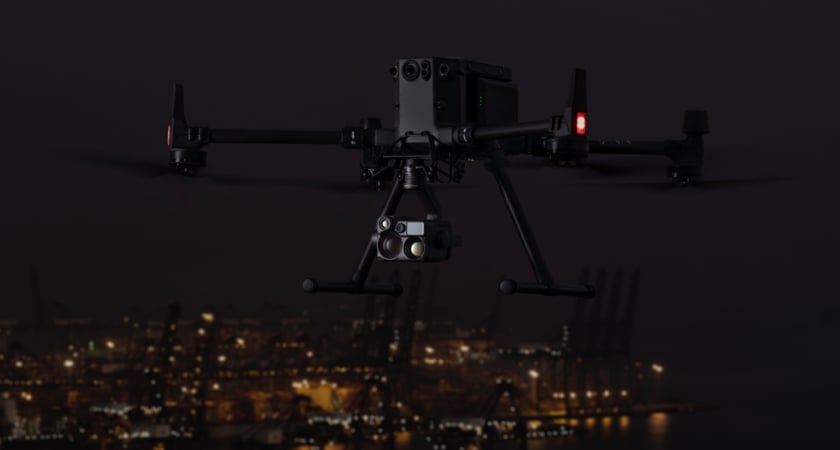
Starlight sensors for low light operations
There are plenty of scenarios in which thermal imaging isn’t the best solution. During Search & Rescue missions, surface temperature measurements from a thermal sensor don’t always tell the whole story. They require a degree of interpretation and operators can be deceived by conditions, clothing, and even rescue blankets. All of this can make identifying people in low light conditions a significant challenge.
Starlight sensors are different. To understand how let’s start with illuminance. This is the intensity of light a given area gives off. It’s measured in Lux (also referred to as the luminous flux per unit area). 1 Lux is equal to one lumen per square meter. Generally, the human eye struggles to identify objects when the light intensity drops below 20 Lux.
Starlight sensors have a wider aperture and reduced shutter speed compared to standard cameras. This allows more light to reach the sensor, for greater clarity in low light conditions. The sensor works alongside algorithms that suppress image noise and enhance image quality.
Our Starlight sensor is inside both the Zoom and the Wide cameras on the H20N. When the payload is used in Night mode, the camera switches the IR filter of the lens and the ISP parameters are adjusted. An intelligent low-light enhancement algorithm allows operators to detect light sources as low as 0.0001 Lux, far beyond what the human eye is capable of seeing.
The result is a game-changing ability to clearly view targets and points of interest through the darkness.
 Left: View from the human eye; Right: Starlight Zoom Camera
Left: View from the human eye; Right: Starlight Zoom Camera
Powerful Zoom Capabilities
The H20N has a 4MP 20x hybrid optical zoom camera with added Starlight functionality. This powerful combination enables a range of public safety and security applications, from searching for missing people, to identifying illegal poachers after dark, to night-time patrols of mines, construction sites, and other sensitive areas.
We’re excited to see this technology translate into significant benefits for night-time Search & Rescue missions. High-resolution close-ups and recognizable images in low-light promise to reduce false positives, improve decisions around resource deployment, and shorten the time missions take from start to finish.
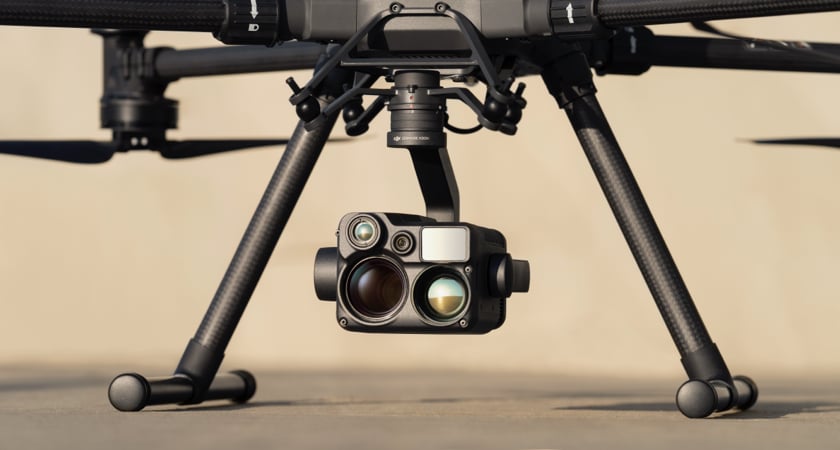
Dual thermal sensors
Complimenting our new Starlight capability, the H20N includes dual thermal sensors to relay detailed infrared data. Two fixed lens 640x512 thermal cameras remove the need for continuous zoom: one offers a 2x zoom and the other offers 8x zoom.
Now, when you see some hot pixels on your screen, you don’t have to descend to dangerously low altitudes to get a closer look. You can just zoom in to see clearly if that heat source is a person, a dog, or something else. This step forward significantly increases the observation distance of the H20N’s thermal imaging capabilities and saves pilots precious time, when every moment matters.
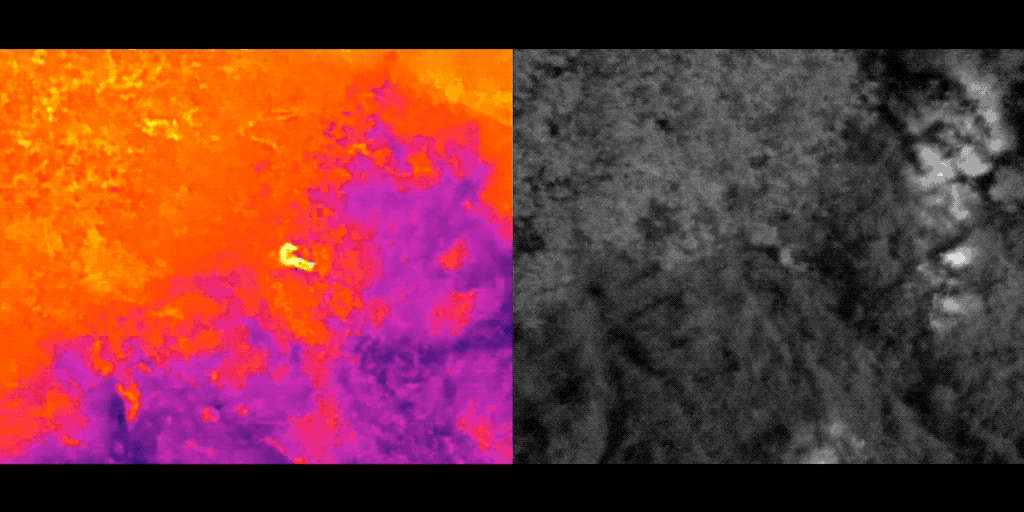 Synchronized Split-screen Zoom saves you time and increases search efficiency
Synchronized Split-screen Zoom saves you time and increases search efficiency
Synchronized Split-screen Zoom
The H20N’s hybrid payloads are most powerful when used in conjunction with one another.
Operators can enhance visibility in challenging conditions by simultaneously zooming on a split-screen with both the thermal and visual sensors. In low light and when certainty is required before making operational decisions, having this flexibility at your fingertips is paramount.
A Laser Rangefinder for unmatched precision
The H20N carries over the same Laser Rangefinder incorporated into the Zenmuse H20 and H20T payloads. With a detection range from 3-1200m, the rangefinder provides precise coordinates of a location or object to an accuracy of +/- 1 meter. The PinPoint feature means this capability is always on hand. A quick tap marks an object in view, before DJI’s advanced sensor fusion algorithms deliver its GPS coordinates - along with its distance from the aircraft and relative height.
In combination with the H20N’s Starlight sensors, low light is no longer an issue when coordinating missions from above.
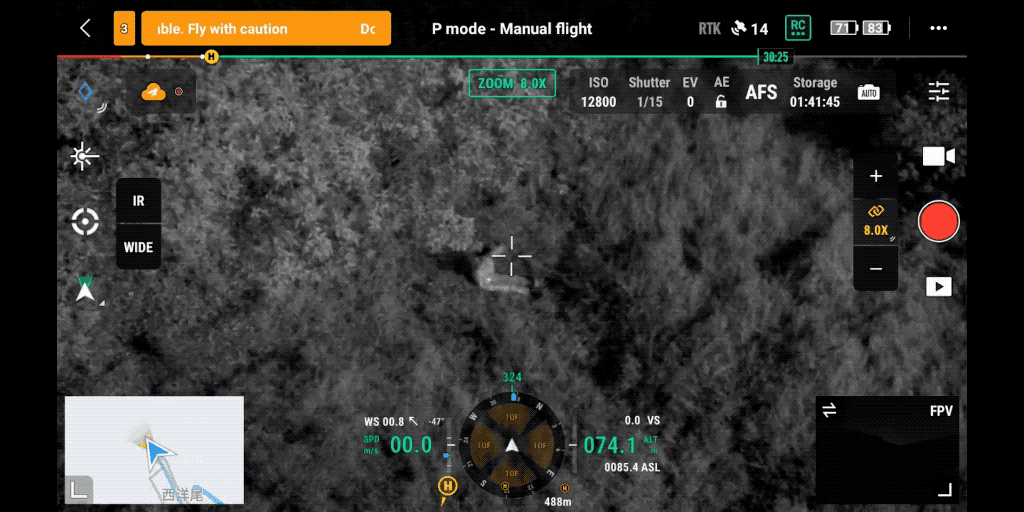 The flash of light in this GIF is from the H20N's laser rangefinder, detected by its starlight sensors
The flash of light in this GIF is from the H20N's laser rangefinder, detected by its starlight sensors
Durability and resilience
The H20N hybrid payload has been designed to withstand testing conditions and support public safety and security missions no matter the weather. It’s IP44-rated and can operate in temperatures from -20 to 50 degrees Celsius.
As drones become essential tools for emergency teams and inspection crews, it’s vital that payloads are rugged enough to handle whatever the elements have in store. The H20N won’t let you down.
What are the main differences between the Zenmuse H20N and H20T?
The Zenmuse H20T and the H20N have plenty in common. But a couple of subtle differences optimize them for different mission scenarios. On the H20N, both the Wide and Zoom cameras incorporate Starlight sensors that are better suited for low-light environments. When image clarity and the ability to identify people or objects after dark is the priority, the H20N’s capability is unrivaled.
In the daytime, things are different. That’s because the Wide camera on the H20N has a lower pixel count compared to H20T. For the H20N to achieve its impressive low-light capabilities, each pixel has to be bigger to allow in more light. The CMOS sensors on both payloads are comparable (1/1.8 vs 1/1.7) but the H20N has fewer pixels overall to optimize its low light performance.
The H20N also has dual thermal imaging cameras with hybrid zoom functionality, significantly increasing the observation distance of the thermal sensor.
The best payload for you will depend on the conditions and the mission at hand, but we anticipate the H20N and the H20T complimenting each other. This latest hybrid sensor provides unprecedented versatility for public safety teams working with the M300.
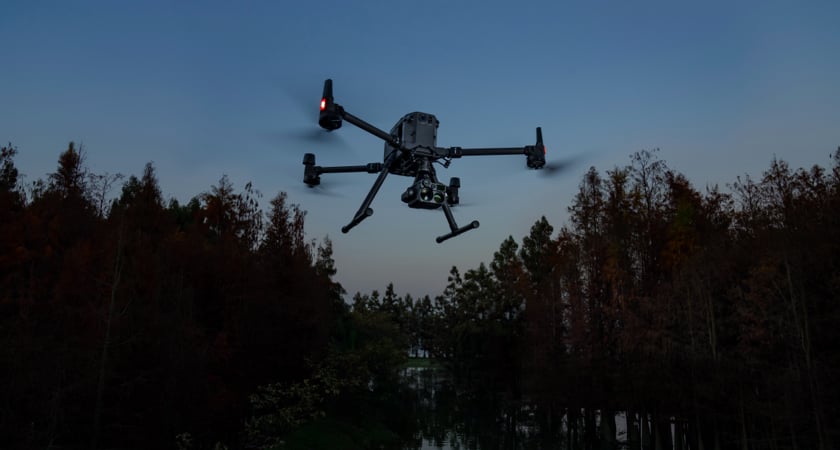
Redefining drone work after dark
The H20N is a powerful payload option for low-light operations. We can’t wait to see how M300 users around the world incorporate it into vital public safety and security missions. For more information on our latest hybrid sensor, visit the H20N page here: https://www.dji.com/zenmuse-h20n



.png?width=300&name=FH2%20update%20(1).png)
-1.png?width=300&name=HS%20-%20Featured%20Images%20(3)-1.png)
